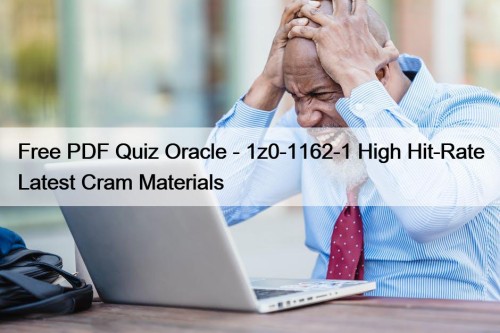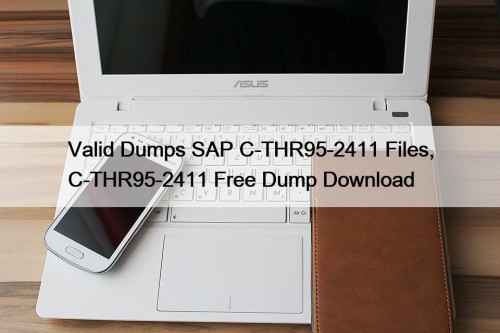Most Popular
 Free PDF Quiz Oracle - 1z0-1162-1 High Hit-Rate Latest Cram Materials
Free PDF Quiz Oracle - 1z0-1162-1 High Hit-Rate Latest Cram Materials
They are using outdated materials resulting in failure and loss ...
 Latest 700-750 Guide Files - 700-750 Reliable Test Sims
Latest 700-750 Guide Files - 700-750 Reliable Test Sims
BONUS!!! Download part of VerifiedDumps 700-750 dumps for free: https://drive.google.com/open?id=1yWrWkptPFRwQl_VLW3hxx8kORWhK5PlFWhen ...
 Valid Dumps SAP C-THR95-2411 Files, C-THR95-2411 Free Dump Download
Valid Dumps SAP C-THR95-2411 Files, C-THR95-2411 Free Dump Download
Have similar features to the desktop-based exam simulator contains actual ...



[2025] ISACA IT-Risk-Fundamentals Questions: Tips to Get Results Effortlessly

Achieving the ISACA IT-Risk-Fundamentals certificate is an excellent way of paying your way in the tech field. However, to become ISACA IT-Risk-Fundamentals certified, you will have to crack the ISACA IT-Risk-Fundamentals exam. This is a challenging task since preparation for the ISACA IT-Risk-Fundamentals Exam demands an inside-out understanding of IT-Risk-Fundamentals domains and many ISACA IT-Risk-Fundamentals test applicants do not have enough time due to their busy routines.
The price for IT-Risk-Fundamentals exam torrent are reasonable, and no matter you are a student at school or an employee in the enterprise, you can afford the expense. In addition, IT-Risk-Fundamentals exam dumps are reviewed by skilled professionals, therefore the quality can be guaranteed. We offer you free demo to have a try before buying IT-Risk-Fundamentals Exam Torrent from us, so that you can know what the complete version is like. Free update for one year is available, and the update version will be sent to your email address automatically.
>> IT-Risk-Fundamentals Dump Collection <<
Pass Guaranteed Quiz 2025 Trustable ISACA IT-Risk-Fundamentals Dump Collection
Our IT-Risk-Fundamentals exam materials are so popular and famous in the market according to the advantages of them. Our IT-Risk-Fundamentals study questions not only have three different versions for our customers to choose and enjoy the convenience and preasure in the varied displays. The most important part is that all content of our IT-Risk-Fundamentals learning braindumps are being sifted with diligent attention and easy to understand for all of our candidates.
ISACA IT-Risk-Fundamentals Exam Syllabus Topics:
| Topic | Details |
|---|---|
| Topic 1 |
|
| Topic 2 |
|
| Topic 3 |
|
| Topic 4 |
|
| Topic 5 |
|
ISACA IT Risk Fundamentals Certificate Exam Sample Questions (Q56-Q61):
NEW QUESTION # 56
Publishing l&T risk-related policies and procedures BEST enables an enterprise to:
- A. ensure regulatory compliance and adherence to risk standards.
- B. set the overall expectations for risk management.
- C. hold management accountable for risk loss events.
Answer: B
Explanation:
Publishing IT risk-related policies and procedures sets the overall expectations for risk management within an enterprise. These documents provide a clear framework and guidelines for how risk should be managed, communicated, and mitigated across the organization. They outline roles, responsibilities, and processes, ensuring that all employees understand their part in the risk management process. This clarity helps align the organization's efforts towards a common goal and fosters a risk-aware culture. While holding management accountable and ensuring regulatory compliance are important, the primary role of these policies is to set the tone and expectations for managing risks effectively, as emphasized by standards such as ISO 27001 and COBIT.
NEW QUESTION # 57
Risk monitoring is MOST effective when it is conducted:
- A. throughout the risk treatment planning process.
- B. following changes to the business's environment.
- C. before and after completing the risk treatment plan.
Answer: A
Explanation:
Effectiveness of Risk Monitoring:
* Continuous risk monitoring throughout the risk treatment planning process ensures that changes in the risk environment are detected early and addressed promptly.
* It allows for real-time adjustments and improvements to the risk treatment plan.
Phases of Risk Monitoring:
* Before Treatment:Initial monitoring helps in understanding the baseline risk levels and identifying critical areas that need attention.
* During Treatment:Ongoing monitoring ensures that the risk treatment measures are effective and any deviations are corrected timely.
* After Treatment:Post-treatment monitoring verifies the long-term effectiveness of the risk responses and identifies any residual risks.
References:
* ISA 315 (Revised 2019), Anlage 5discusses the importance of continuous monitoring in risk management to adapt to changes and ensure the effectiveness of risk treatments.
NEW QUESTION # 58
Which of the following is the BEST way to interpret enterprise standards?
- A. An approved code of practice
Q Documented high-level principles - B. A means of implementing policy
Answer: B
Explanation:
Unternehmensstandards dienen als Mittel zur Umsetzung von Richtlinien. Sie legen spezifische Anforderungen und Verfahren fest, die sicherstellen, dass die Unternehmensrichtlinien eingehalten werden.
* Definition und Bedeutung von Standards:
* Enterprise Standards: Dokumentierte, detaillierte Anweisungen, die die Umsetzung von Richtlinien unterstützen.
* Implementierung von Richtlinien: Standards helfen dabei, die abstrakten Richtlinien in konkrete, umsetzbare Maßnahmen zu überführen.
* Beispiele und Anwendung:
* IT-Sicherheitsstandards: Definieren spezifische Sicherheitsanforderungen, die zur Einhaltung der übergeordneten IT-Sicherheitsrichtlinien erforderlich sind.
* Compliance-Standards: Stellen sicher, dass gesetzliche und regulatorische Anforderungen eingehalten werden.
References:
* ISA 315: Role of IT controls and standards in implementing organizational policies.
* ISO 27001: Establishing standards for information security management to support policy implementation.
NEW QUESTION # 59
Which of the following would have the MOST impact on the accuracy and appropriateness of plans associated with business continuity and disaster recovery?
- A. Changes to the business impact assessment (BIA)
- B. Material updates to the incident response plan
- C. Data backups being moved to the cloud
Answer: A
Explanation:
Definition and Context:
* ABusiness Impact Assessment (BIA)is a process that helps organizations identify critical business functions and the effects that a business disruption might have on them. It is fundamental in shaping business continuity and disaster recovery plans.
Impact on Business Continuity and Disaster Recovery:
* Material updates to the incident response plancan affect business continuity, but they are typically tactical responses to incidents rather than strategic shifts in understanding business impact.
* Data backups being moved to the cloudcan improve resilience and recovery times, but the strategic importance of this change is contingent on the criticality of the data and the reliability of the cloud
* provider.
* Changes to the BIAdirectly affect theaccuracy and appropriateness of plans associated with business continuity and disaster recovery. The BIA defines what is critical, the acceptable downtime, and the recovery priorities. Therefore, any changes here can significantly alter the continuity and recovery strategies.
Conclusion:
* Given the strategic role of the BIA in business continuity planning, changes to the BIA have the most substantial impact on the accuracy and appropriateness of business continuity and disaster recovery plans.
NEW QUESTION # 60
A risk practitioner has been tasked with analyzing new risk events added to the risk register. Which of the following analysis methods would BEST enable the risk practitioner to minimize ambiguity and subjectivity?
- A. Annual loss expectancy (ALE)
- B. Delphi method
- C. Brainstorming
Answer: A
Explanation:
Annual Loss Expectancy (ALE) is a quantitative method that calculates the expected financial loss from a risk event over a year. It is the most objective method among the options listed because it relies on numerical data and calculations.
The Delphi method (B) and brainstorming (C) can be useful for gathering diverse perspectives, but they are more subjective.
NEW QUESTION # 61
......
If you purchase IT-Risk-Fundamentals exam questions and review it as required, you will be bound to successfully pass the exam. And if you still don't believe what we are saying, you can log on our platform right now and get a trial version of IT-Risk-Fundamentals study engine for free to experience the magic of it. Of course, if you encounter any problems during free trialing, feel free to contact us and we will help you to solve all problems on the IT-Risk-Fundamentals practice engine.
Exam IT-Risk-Fundamentals Questions Fee: https://www.troytecdumps.com/IT-Risk-Fundamentals-troytec-exam-dumps.html
- Pass Guaranteed 2025 High Pass-Rate ISACA IT-Risk-Fundamentals Dump Collection 📺 Copy URL ▶ www.dumpsquestion.com ◀ open and search for 【 IT-Risk-Fundamentals 】 to download for free 🆘IT-Risk-Fundamentals Latest Dumps
- IT-Risk-Fundamentals Latest Practice Questions 🧪 IT-Risk-Fundamentals New Practice Materials 🕎 IT-Risk-Fundamentals Exam Brain Dumps 🥝 Download 【 IT-Risk-Fundamentals 】 for free by simply searching on ✔ www.pdfvce.com ️✔️ 🐴Reliable IT-Risk-Fundamentals Test Book
- 2025 Accurate IT-Risk-Fundamentals Dump Collection | IT Risk Fundamentals Certificate Exam 100% Free Exam Questions Fee 🦌 Download { IT-Risk-Fundamentals } for free by simply searching on ( www.prep4pass.com ) 🛀Practice Test IT-Risk-Fundamentals Pdf
- IT-Risk-Fundamentals test dump, IT-Risk-Fundamentals pass exam 🚎 Search for ⇛ IT-Risk-Fundamentals ⇚ and download exam materials for free through { www.pdfvce.com } 🦎Valid IT-Risk-Fundamentals Real Test
- IT-Risk-Fundamentals Reliable Dumps Ppt 😢 Practice Test IT-Risk-Fundamentals Pdf 🍦 IT-Risk-Fundamentals Reliable Dumps Ppt 😕 Open website [ www.pass4leader.com ] and search for ⇛ IT-Risk-Fundamentals ⇚ for free download 🧐Reliable IT-Risk-Fundamentals Dumps Ebook
- IT-Risk-Fundamentals - Accurate IT Risk Fundamentals Certificate Exam Dump Collection 🤞 Immediately open ▛ www.pdfvce.com ▟ and search for ▷ IT-Risk-Fundamentals ◁ to obtain a free download 🐐Latest IT-Risk-Fundamentals Test Question
- IT-Risk-Fundamentals Dump Collection - 100% Realistic Questions Pool 📎 Download ➡ IT-Risk-Fundamentals ️⬅️ for free by simply entering ( www.torrentvce.com ) website 🥝Latest IT-Risk-Fundamentals Learning Materials
- Reliable IT-Risk-Fundamentals Dumps Ebook 🥽 Valid IT-Risk-Fundamentals Real Test ℹ Reliable IT-Risk-Fundamentals Dumps Ebook 🕓 Search for ▷ IT-Risk-Fundamentals ◁ on { www.pdfvce.com } immediately to obtain a free download 🥗Reliable IT-Risk-Fundamentals Test Bootcamp
- IT-Risk-Fundamentals test dump, IT-Risk-Fundamentals pass exam 🚄 Search for [ IT-Risk-Fundamentals ] and download exam materials for free through 【 www.real4dumps.com 】 ☘IT-Risk-Fundamentals Exam Brain Dumps
- Valid IT-Risk-Fundamentals Real Test 🎅 IT-Risk-Fundamentals Reliable Dumps Ppt 💛 Latest IT-Risk-Fundamentals Dumps Book 🤜 Open website ☀ www.pdfvce.com ️☀️ and search for ( IT-Risk-Fundamentals ) for free download 🐾IT-Risk-Fundamentals Popular Exams
- IT-Risk-Fundamentals Popular Exams 🩲 IT-Risk-Fundamentals Reliable Dumps Ppt 🗻 IT-Risk-Fundamentals Reliable Dumps Ppt 💾 Search for ➤ IT-Risk-Fundamentals ⮘ on 《 www.prep4pass.com 》 immediately to obtain a free download 🎩Latest IT-Risk-Fundamentals Test Question
- IT-Risk-Fundamentals Exam Questions
- academy.aincogroup.com szw0.com www.ruzhou.net.cn cecurrent.com iwbuys.com www.educulture.se rhinotech.cc:88 dataclick.in letscelebrations.com academia.ragif.com.ar
Tags: IT-Risk-Fundamentals Dump Collection, Exam IT-Risk-Fundamentals Questions Fee, IT-Risk-Fundamentals Test Labs, Trustworthy IT-Risk-Fundamentals Exam Content, IT-Risk-Fundamentals Test Questions Vce